 |
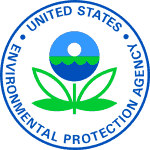 |
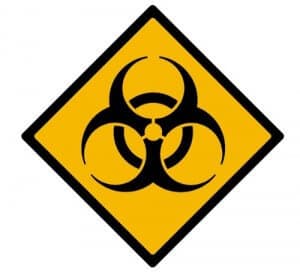 |
 It sometimes seems as if there’s a government official waiting around every corner of your shop…waiting to cite and fine you for something you haven’t registered, posted or otherwise complied with. In reality, it’s unlikely that your shop will come to the government’s attention. That is unless a serious accident occurs or a disgruntled employee or unhappy neighbor phones in a complaint. Once an official arrives in your shop, he discovers enough to write a costly fine.
It sometimes seems as if there’s a government official waiting around every corner of your shop…waiting to cite and fine you for something you haven’t registered, posted or otherwise complied with. In reality, it’s unlikely that your shop will come to the government’s attention. That is unless a serious accident occurs or a disgruntled employee or unhappy neighbor phones in a complaint. Once an official arrives in your shop, he discovers enough to write a costly fine.
What are the most likely noncompliance issues? We asked that very question to both the U.S. Environmental Protection Agency (EPA) and the Occupational Safety and Health Administration (OSHA).
OSHA Directorate of Compliance programs quickly identified the top five OSHA violations in body shops.
Top Five OSHA Violations:
 The No. 1 The most common citation was for a violation of the 1910.1200 section of the OSHA standards:
The No. 1 The most common citation was for a violation of the 1910.1200 section of the OSHA standards:
The well-known “Hazard Communication” section. The goal of this section is to identify and evaluate the hazards present from any chemicals used in the workplace. Inform employees of the risks and necessary precautions when potential hazards are identified. Including Safety Data Sheets (SDS), proper labeling of each container, and a written program documenting employee training provided.
Not having an SDS binder, keeping the mixed color contained within correctly labeled cans, failing to train, or properly document training. If this is the case, your shop is in violation of 1910.1200.
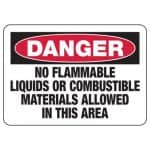
The No. 2 Running a close second in the volume of citations to body shops from the OSHA inspector is General Industry Standard 1910.107
Spray Finishing Using Flammable and Combustible Materials. This section deals with the construction of the spray booth. Taken into consideration is the airspeed moving through the booth, the fire protection and electrical wiring, including lighting. The shops incurring these citations were spraying paint in less-than-acceptable areas. A new $50,000 booth isn’t necessary. That said, you may need to spend money to improve the safety of your current spray facilities. This will make your spray painting safer, also is likely to improve the quality of the finished paint job. Increasing the air flow to 100 FPM meets the requirement for operator safety, also speeds up the dry times.
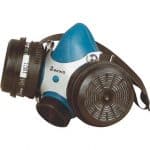 The No. 3 violation in body shops is Standard 1910.134
The No. 3 violation in body shops is Standard 1910.134
Respiratory Protection. When the OSHA inspector watches your painters work and they aren’t wearing the correct or, more typically, any – respirator, a fine is likely.
A top concern is that your employees are safely protected from harmful dust, fogs, fumes, mists, gases, smokes, sprays or vapors. As well, it seems pretty clear that spraying automotive paints falls into these regulated areas. The shop must have a written respirator program and that employees be given fitting instructions. Often, your paint jobber can provide a training and fit testing session that will meet these requirements. And remember, the government wants to see all your plans in writing, including who was trained and when. If you can’t produce these training records, you’re still in violation of this standard.
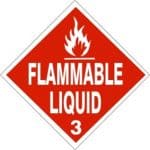 The No. 4 violation is 1910.106 – Flammable and Combustible Liquids
The No. 4 violation is 1910.106 – Flammable and Combustible Liquids
This section addresses the problems that all those flammable solvents bring into your shop. This section also defines commonly used terms often misunderstood in the industry. Such as “flashpoint.” This means the minimum temperature at which a liquid gives off vapor within a test vessel in sufficient concentration to form an ignitable mixture with the air near the surface of the liquid. Combustible liquids reach that stage of vapor load at temperatures more than 100 degrees F. Flammable liquids are ready to form an ignitable mixture below 100 degrees F.
Most of the primers, solvents, and paints used in auto body are flammable liquids. OSHA will cite your facility if your shop isn’t handling, storing, venting, and using products in compliance with the standards. Virtually every paint product in the shop has the ability to form an ignitable mixture with air. Thus the key to preventing a catastrophe is to remove every source of ignition. When electrical and fire inspectors are giving you grief about hard wiring the machinery and using explosion-proof motors in risky atmospheres, they’re just trying to keep any spark from igniting what’s clearly an ignitable mix. (And, keep in mind that all the expensive wiring in the world won’t help if the painters are regularly lighting matches in the paint room!)
The next most commonly violated standard is 1910.157
Portable Fire Extinguishers. Appropriately, the law wants you to have a reliable method to extinguish a fire once it starts. This section requires the employer to provide portable fire extinguishers and to mount, locate and identify them so they’re readily accessible to employees without subjecting employees to possible injury. The placement, use, maintenance and testing of extinguishers are designed to make sure the painters can find them, grab them and use them when the fire starts.
What’s the most likely catastrophe of any kind to strike your body shop? Fire! Consider that your local schools have a fire drill every few months so your 5-year-old neighbor kid knows exactly what to do and where to go when the alarm sounds. But, in a typical body shop, no one has ever said a word about what to do when a fire starts. Yet your shop is a lot more likely to catch fire than the grade school is – that solvent-soaked masking paper will burn just great when the sparks from the plasma cutter fly into it
Good housekeeping will likely do more than any other single thing to prevent a fire in a body shop. Grounding the thinner drums will prevent an ignition source from catching the vapors on fire from a static spark. And while forbidding smoking anywhere near the paint room will greatly reduce the risk of fire, simply confining and removing the trash twice a day will probably do more good.
OSHA Compliance
Complying with the OSHA standards can be confusing and time-consuming, so each state has at least one agency designed to help you meet the OSHA standards and keep your workplace safe. Years ago, it was difficult to get any neutral help in complying with the requirements because the inspectors often couldn’t offer advice – they could only write citations. These days, your area will likely have two or three agencies, departments, committees or bureaus that would like nothing more than a chance to give you some free counsel about OSHA compliance.
EPA Compliance
The Clean Air Act (CAA) of 1990 made some sweeping changes affecting the automotive paint industry. However, the CAA also provided funding to establish neutral sources of assistance to help regulated businesses comply with the goal of pollution prevention. One of these technical-assistance providers is CCAR – a nonprofit group whose only purpose is to help automotive aftermarket people – like you – comply with the law. CCAR has just completed the very first national study on the aftermarket’s state of compliance regarding EPA rules and regulations. Five different colleges participated in gathering the information from 440 auto body and auto service shops around the country, and both automotive and environmental college students conducted the polling after an instructor from each school attended training in Atlanta, Ga., to establish uniform criteria. They wanted to judge the actual state of compliance with the existing federal EPA regulations.
Compliance Evaluation
From March through September 1997, the five schools gathered information based on a common guidance document. They were seeking information on two levels: to get a general sense of how compliant the shops were and to ask explicit questions about how the shops handled specific hazardous waste problems. They divided the information into shops that were located in rural or urban areas to see if one segment was more compliant, and they further divided the automotive service respondents into four groups; dealers, franchises, service shops, and body shops. The body shops represented 28 percent of the businesses polled. No body shop in the survey was a large-quantity generator (more than five 55-gallon drums of waste per month).
However, 90 percent of the shops surveyed were small-quantity generators (more than one-half of a 55-gallon drum each month). The last 10 percent were conditionally exempt waste generators that produce less than 220 pounds in any one month. In total, body shops were the second most compliant group, with new car dealers being the most compliant. Franchises were third, and service shops were fourth.
Predictably, the urban shops of any description were more compliant than the rural shops. This might be attributable to stricter enforcement of community regulations in larger cities, to better information among urban shops or to greater exposure to various compliance vendors (waste haulers, Treatment, Storage & Disposal [TSD] facilities).
Top EPA Violations:
Regarding EPA violations, CCAR’s study found that:
The area of least compliance was the posting of emergency phone numbers. Posting phone numbers near telephones in case of a spill or other waste-related emergency is a requirement. Phone numbers must include the local fire department, the National Response Center (800-424-8802). As well to include any local hazardous-waste response team, and the name and phone number of the facility’s emergency-response coordinator (probably the shop owner).
Another area of lower compliance for body shops was the storage and labeling of spent solvents.
While in control of hazardous waste, you’re required to clearly mark each container with “Hazardous Waste.” As well to write the date waste is collected in that container. You must also keep the containers in good condition and replace any leaking ones. A waste container is to be kept closed except when filling or emptying it. Containers must be inspected every week for leaks or corrosion, and the shop needs to have a written record that those inspections were made each week. The stored waste must then be treated or legally removed within nine months.
One area of confusion here is the closed-container prohibition. During the course of a typical day in a paint shop, painters dump excess paint products many times. If the painter has to remove the bung from the waste drum, pour in the waste and screw the bung back tightly each time, lots of expensive labor time is wasted every day.
But the EPA’s concern about your waste solvent is different from the local fire inspector’s concern. The fire inspector is worried that the open container will emit enough solvent to cause an ignitable mixture with the air near the bunghole. In some cities, this problem can be overcome by using a spring-loaded funnel. The funnel lid snaps shut after every use, and the solvent fumes are contained. On the other hand, the EPA inspector’s concern is that the hazardous waste not pour out onto the ground if the drum is knocked over, so having the bung screwed tightly in place will keep the waste from spilling out. One possible solution to satisfy both requirements is to use the spring-loaded funnel to keep the fumes contained and chain the drum to the wall so it can’t be tipped over.
The next most common violation is the actual disposal of wastes.
In each case, the generator of the waste is responsible for it forever. One must choose a hazardous-waste hauler that has the correct EPA permit to haul waste. As well, ensure that waste is hauled to a properly permitted TSD facility. When using a permitted hauler that dumped in a permitted site, you are responsible for the waste your shop generates. To pass an EPA inspection with flying colors if your in-house waste is correctly labeled, stored and can produce two copies of every manifest showing your waste was legally leaving your shop and arriving at its destination. You must retain one copy of the manifest (a five-part shipping document) when he leaves, and have a second copy mailed back from the TSD facility in roughly 30 days. Keep these on file to prove you legally disposed of the waste you generated.
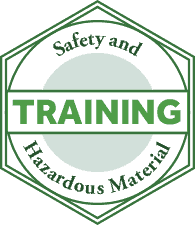 Compliance Help
Compliance Help
Getting additional compliance help is as easy as visiting the CCAR Web site. CCAR has more than 100 affiliate members, with everyone’s goal being to help the automotive-service aftermarket comply with environmental regulations. This particular project dealing with hazardous waste is called Greenlink. Note: CCAR will have a virtual body shop site online this spring. Go to (http://www.ccar-greenlink.org), you can visit CCAR’s virtual service shop. you will see a typical auto service bay with lights in the ceiling, drains in the floor, storage tanks by the walls and a car on the hoist. Move your mouse in the virtual shop and click, you’ll then be linked to an appropriate environmental assistance site. Click on the light fixtures and see a page of information about the legal requirements for lighting in hazardous environments. Click on the used-oil drum and connect with appropriate information on waste-oil management.
On the Right Side of the Law
Keeping current with federal government regulations can be frustrating! – But remember that OSHA regulations are primarily designed to make your business a safe place to work. Who can argue that’s not important? EPA regulations are designed to keep the Earth a friendly place for our descendants – also an admirable goal. The fact is, even if you don’t think these regulations are admirable, you still have to comply with them. Take the time now to understand the issues and to gather the information to keep you in compliance. In the long run, you, your employees and your bank account will be better off.
Reducing Hazardous Waste Up To 95% BECCA Solvent Saver Recyclers

